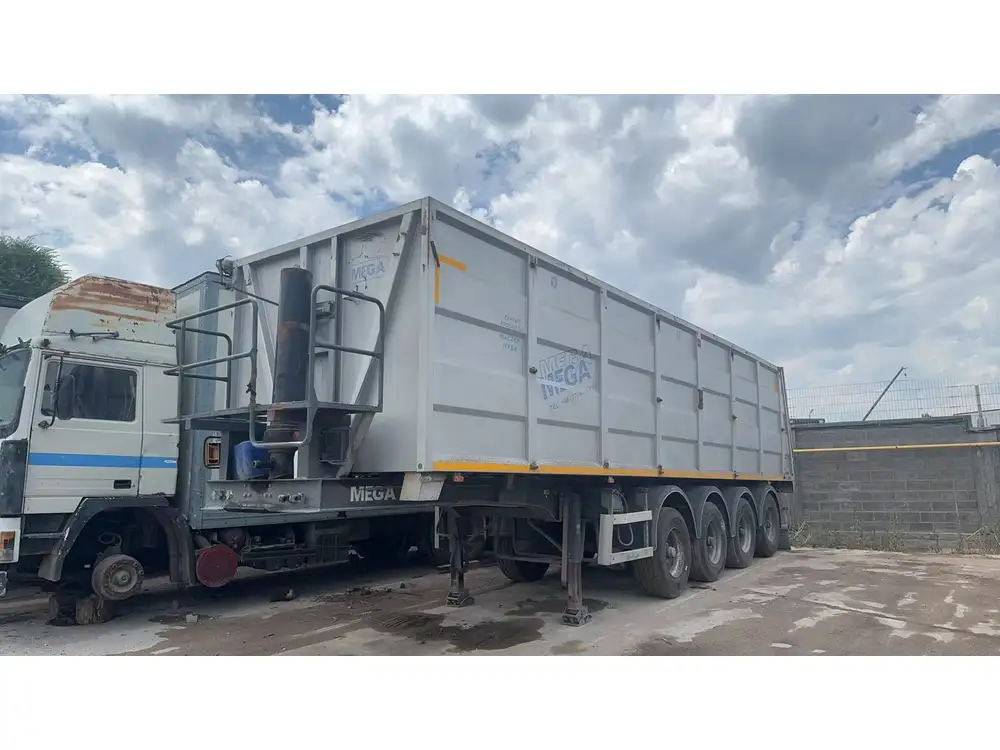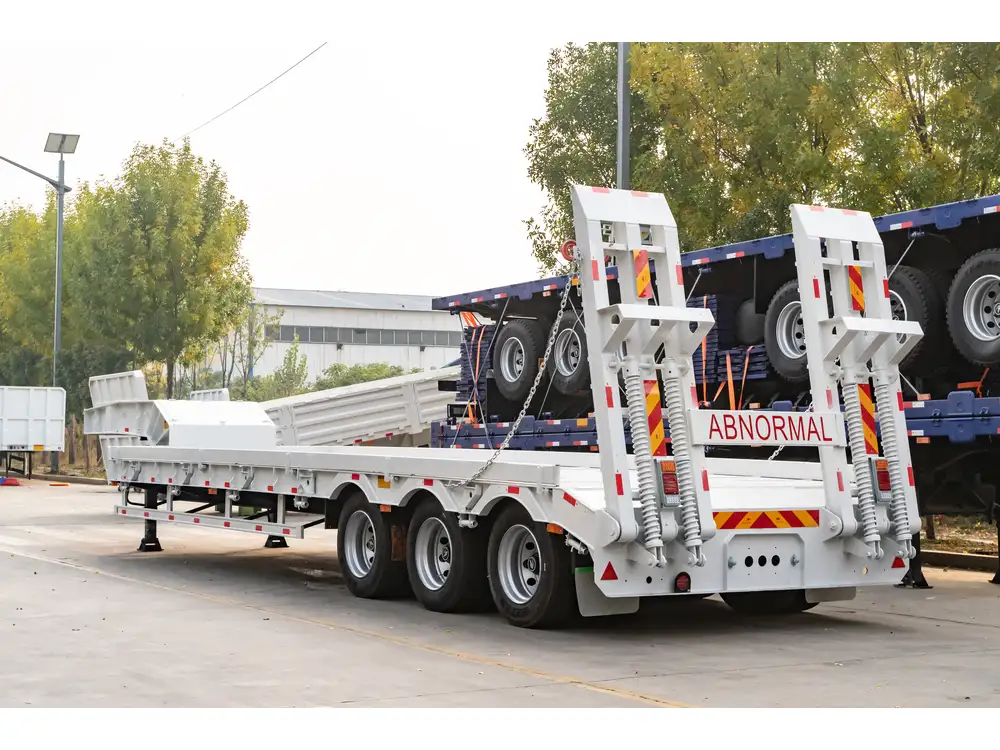When it comes to engineering efficiency in the realm of transportation and construction, frameless dump trailers stand out as a pinnacle of design and functionality. However, maneuvering such immense machinery requires not just skill but also an understanding of the mechanics involved in the dumping process. In this guide, we will delve into the intricacies of properly dumping a frameless dump trailer, ensuring safety and optimizing efficiency for operators.
Understanding the Frameless Dump Trailer
What is a Frameless Dump Trailer?
Frameless dump trailers, unlike their framed counterparts, lack a conventional frame structure, offering a lower center of gravity and improved stability. This design favors a lightweight yet sturdy construction, allowing greater payload capacity while enhancing maneuverability.
| Feature | Frameless Dump Trailer | Framed Dump Trailer |
|---|---|---|
| Weight | Lighter | Heavier |
| Stability | Higher | Moderate |
| Loading Capacity | Greater | Limited |
| Versatility | Excellent | Good |

Key Components
Before we dive into the dumping procedure, let’s familiarize ourselves with the crucial components of a frameless dump trailer:
- Tipping Mechanism: This hydraulic system allows the trailer bed to lift, facilitating the unloading of materials.
- Hitch Assembly: Connects the trailer to the towing vehicle.
- Body Material: Generally constructed from aluminum or high-strength steel, enhancing durability.
- Axles and Suspension: Essential for balancing load distribution during transportation.
Preparing for the Dumping Process
Safety First: Emphasizing Precautions
Understanding safety protocols is paramount in ensuring the wellbeing of operators and bystanders alike. Here’s a concise checklist to follow:
- Inspect the Trailer: Before any operation, conduct a thorough inspection of the trailer. Check for hydraulic leaks, tire pressure, and structural integrity.
- Worksite Assessment: Evaluate the terrain. Ensure the ground is stable and even to prevent tipping during unloading.
- Personal Protective Equipment (PPE): Always wear suitable PPE, including hard hats, safety goggles, and steel-toed boots.

Proper Positioning
- Vehicle Alignment: Ensure that the towing vehicle is aligned correctly with the trailer’s hitch.
- Space Clearance: Maintain a safe distance from obstacles and overhead hazards such as power lines.
| Preparation Step | Action Required |
|---|---|
| Inspect Trailer | Check for leaks and ensure all components are sound. |
| Assess Terrain | Confirm that the ground is solid and level. |
| Equip Yourself with PPE | Safety gear must be worn at all times. |
Step-by-Step Guide on How to Properly Dump a Frameless Dump Trailer
Step 1: Hook-Up Protocol
Ensuring that your trailer is properly connected is critical. Here’s how:
- Secure the Hitch: Connect the hitch securely, ensuring the safety chain is attached—this prevents accidental decoupling.
- Check Electrical Connections: Validate that all lights and brake connections are operational.

Step 2: Positioning for Dumping
Once connected, maneuver the vehicle into the desired unloading zone:
- Level Ground: Position the truck on a level surface.
- Set the Brakes: Engage the parking brake on both the towing vehicle and the trailer.
Step 3: Activating the Dumping Mechanism
With everything in place, it’s time to initiate the dump:
- Start the Vehicle: Turn on the engine and activate hydraulic power.
- Raise the Box: Begin the lifting process by slowly raising the trailer box using the hydraulic controls. Monitor the angle while raising to prevent any tipping or instability.
Step 4: Unloading
As the trailer approaches its tipping point:
- Watch the Load: Observe the material as it begins to exit. This is crucial for adjusting the box’s angle to ensure complete unloading.

Step 5: Returning to Position
After emptying the load:
- Lower the Box Gradually: Bring the trailer box back down to its resting position gently.
- Verify Clearance: Ensure that the unloading area is clear of bystanders and equipment before leaving.
Common Challenges and Solutions
Problem: Uneven Unloading
Cause: Unstable ground or incorrect angle during dumping.
Solution: Always evaluate the site prior to unloading. If the ground is uneven, consider repositioning the vehicle.

Problem: Hydraulic Failure
Cause: Low fluid levels or system malfunctions.
Solution: Conduct regular maintenance checks, ensuring fluid levels are adequate and that there are no visible leaks. If failure occurs, cease operation immediately and address the issue before resuming.
Problem: Trailer Tipping
Cause: Excessive weight distribution or operation on sloped terrain.
Solution: Always keep weight distributed evenly across the trailer and avoid unloading on an incline.
Maximizing Efficiency in Dumping Operations

Regular Maintenance Practices
To ensure optimal performance and longevity of your frameless dump trailer, adhere to these maintenance practices:
- Hydraulic System Checks: Regularly check hydraulic fluids and replace hoses and fittings that show signs of wear.
- Tire Condition: Monitor tire wear and pressure to prevent blowouts.
- Cleaning: Keep the trailer clean to avoid material buildup that could affect structural integrity.
Training and Skill Development
Invest in comprehensive training programs for operators:
- Hands-On Training: Provide practical field training on safe dumping practices.
- Safety Drills: Conduct regular safety drills to prepare operators for emergencies.
| Efficiency Strategy | Action |
|---|---|
| Maintenance Schedule | Create a routine schedule for inspections. |
| Operator Training Program | Develop a curriculum focused on safety and efficiency. |
Conclusion
In conclusion, mastering the effective utilization of a frameless dump trailer is essential for maximizing operational efficiency and ensuring safety. By understanding the mechanics involved, preparing adequately, and following the outlined steps for proper dumping, operators can mitigate risks significantly and enhance productivity on the job site. Regular maintenance and operator training not only safeguard the equipment but also foster a culture of safety and efficiency within operations.
By implementing the strategies discussed, we can look forward to a streamlined approach to material handling that ensures safety, efficiency, and reliability—all hallmarks of expert frameless dump trailer operations.



